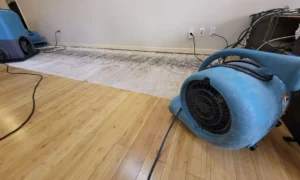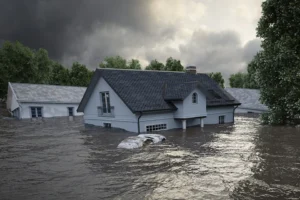Mukilteo winters can be harsh, especially for your home’s plumbing. Freezing temperatures often lead to frozen pipes, which can cause big headaches if not handled properly. These frozen pipes can burst, leading to significant water damage and costly repairs.
Understanding what causes pipes to freeze and how to recognize early signs of trouble can help in taking quick action. Knowing what to look for ensures you can address issues before they escalate into more serious problems, saving time and stress.
Addressing frozen pipes as soon as possible is crucial to avoid damage. Equipped with the right knowledge and tools, homeowners can tackle this common winter issue efficiently. Keeping pipes in good shape ensures uninterrupted water flow and peace of mind, even in the coldest months.
Understanding the Causes of Frozen Pipes
Frozen pipes are a common concern for Mukilteo residents, especially during cold spells. Pipes freeze when temperatures drop, causing water inside to turn into ice. This expansion puts pressure on the pipe walls, which can lead to cracks or bursts. Homes in Mukilteo often experience freezing due to the area’s climate, where winter temperatures can get particularly low.
Different pipe materials have varying vulnerability to freezing. Copper pipes conduct heat easily, making them more susceptible to freezing. PVC and PEX pipes, on the other hand, provide better insulation, though they’re not completely immune to freezing. Homeowners must understand these differences when planning for cold weather.
Certain home areas are more at risk for frozen pipes. Unheated spaces like basements, attics, garages, and crawl spaces often house water lines that are exposed to cooler air. Exterior walls with little insulation also pose a threat. Knowing these vulnerable areas helps homeowners take preventive measures to protect their plumbing system against freezing temperatures and the resulting damage.
Recognizing Signs of Frozen or Burst Pipes
Detecting frozen or burst pipes early is crucial to minimize damage. One clear indicator of a frozen pipe is a lack of water flow or reduced water pressure when you turn on a faucet. This happens because the water in the pipes can’t move past the frozen section.
Besides no water, there are other signs to watch out for. Frost on the outside of pipes is a visible clue that pipes could be frozen. Also, if you hear strange sounds like clanking or gurgling coming from your pipes, this could mean ice blockages are forming inside.
To check for burst pipes safely, first turn off the main water supply to prevent flooding when the ice thaws. Then, visually inspect different areas of your home. Look for puddles or dampness around the base of walls or ceilings, which could indicate leaks from burst pipes. Regularly checking these signs helps catch issues before they escalate into bigger, more costly problems.
Immediate Actions to Take When Pipes Freeze
When you discover a frozen pipe, it’s crucial to act quickly to avoid any bursts that can occur because of building pressure. Here is a step-by-step guide on what to do. First, locate the frozen section of the pipe. This is often in exposed areas like attics or basements. Next, try to open the faucet attached to the frozen pipe. This allows water to flow when it starts to thaw, reducing pressure.
For thawing the pipe, use these safe methods. Start by applying heat to the frozen area using a hairdryer, making sure to keep it at a safe distance to avoid overheating. You can also wrap the pipe in hot towels. If accessible, space heaters can safely warm the room, gradually thawing the pipes. Do not use open flames or high heat devices as they can cause damage or fires.
Make sure to take these safety precautions to prevent pipe bursts while thawing. Monitor the process closely, checking for leaks or unusual noises that might indicate a crack in the pipe. If any serious issues arise, contact a professional right away to handle the situation.
Preventive Measures to Protect Pipes in Winter
Protecting your home’s pipes during winter involves several effective strategies. Proper insulation is the most crucial step. Use foam rubber or fiberglass sleeves to wrap pipes, focusing on those exposed to cold air, like those in unheated areas. Insulating basements, attics, and crawl spaces also helps maintain a warmer environment for your pipes.
Maintaining a consistent indoor temperature is another effective measure. Keep the thermostat set to a minimum of 55°F, even when you’re away. Warm air should circulate around pipes, so keep cabinet doors under sinks open to allow heat to reach them.
Consider long-term solutions for avoiding frozen pipes, like sealing cracks and openings in walls and foundations that let cold air reach pipes. Installing pipe insulation heat cables in vulnerable areas provides an extra layer of security during extremely cold conditions. By taking these steps, you ensure your pipes stay safe throughout the winter.
Conclusion
Dealing with frozen pipes is a common challenge in Mukilteo homes, but with proper knowledge and preparation, it’s manageable. Knowing how to identify frozen pipes early, taking immediate action if needed, and implementing preventive measures can save you significant trouble and expense.
Preventing pipe issues before they start involves more than reactive fixes; it’s about creating a safe and warm environment for your home’s plumbing. This way, you not only protect your pipes but also maintain peace of mind throughout the colder months.
When your plumbing faces challenges from frozen pipes, rely on knowledgeable help to keep your home safe. Northwest Restoration offers expert solutions for preventing and handling frozen pipe issues. Contact our restoration professionals at Northwest Restoration today for comprehensive support and peace of mind in all weather conditions.









